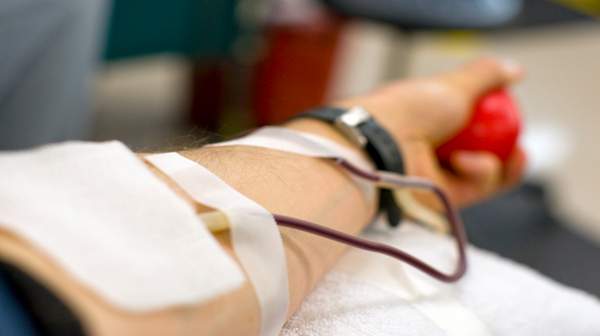What's in this article?
What is Blood Transfusion?
A blood transfusion is a safe, common procedure in which blood is given to you through an intravenous (IV) line in one of your blood vessels.
Blood transfusions are done to replace blood lost during surgery or due to a serious injury. A transfusion also may be done if your body can’t make blood properly because of an illness.
During a blood transfusion, a small needle is used to insert an IV line into one of your blood vessels. Through this line, you receive healthy blood. The procedure usually takes 1 to 4 hours, depending on how much blood you need.
Blood transfusions are very common. Each year, almost 5 million Americans need a blood transfusion. Most blood transfusions go well. Mild complications can occur. Very rarely, serious problems develop.
Important Information About Blood
The heart pumps blood through a network of arteries and veins throughout the body. Blood has many vital jobs. It carries oxygen and other nutrients to your body’s organs and tissues. Having a healthy supply of blood is important to your overall health.
Blood is made up of various parts, including red blood cells, white blood cells, platelets (PLATE-lets), and plasma. Blood is transfused either as whole blood (with all its parts) or, more often, as individual parts.
Blood transfusion facts
- Blood transfusions can be a life saving measure.
- Volunteer donor blood usually is readily available, and when properly tested has a low incidence of adverse events.
- The likelihood of contracting infections from a blood transfusion is very low (varies with the infectious agent from 1 in 350,000 to 1 in 1 million), but can occur.
- Transfusion of your own blood (autologous) is the safest method but requires planning ahead and not all patients are eligible. It is usually only an option for elective surgery.
- Directed donor blood allows the patient to receive blood from known donors.
- Blood conserving techniques are an important aspect of limiting transfusion requirements.
- Blood banks are responsible for collecting, testing and storing blood.
- People with Type O, negative blood are considered universal donors as it is safe to transfuse to nearly everyone.
- Most of the time a transfusion is not a “whole blood” transfusion, but rather certain blood products, with red blood cells being the most common.
When is a blood transfusion needed?
You may need a blood transfusion if you lose too much blood, such as through:
- Injury or major surgery.
- An illness that causes bleeding, such as a bleeding ulcer.
- An illness that destroys blood cells, such as hemolytic anemia or thrombocytopenia.
If you have an illness in which your bone marrow doesn’t make enough blood, such as aplastic anemia, you may need transfusions.
Risks associated with blood transfusion
Blood transfusion is associated with several risks. In the past, the transmission of infections was one of the most important risk factors associated with blood transfusion. Nowadays, this risk is much smaller due to stringent blood screening processes. Other risk factors associated with blood transfusion include:
How you prepare for blood transfusion
Your blood will be tested before a transfusion to determine whether your blood type is A, B, AB or O and whether your blood is Rh positive or Rh negative. The donated blood used for your transfusion must be compatible with your blood type.
You don’t need to change your activity levels or diet before a transfusion.
If you’ve had a reaction to prior blood transfusions, be sure to tell your doctor.





